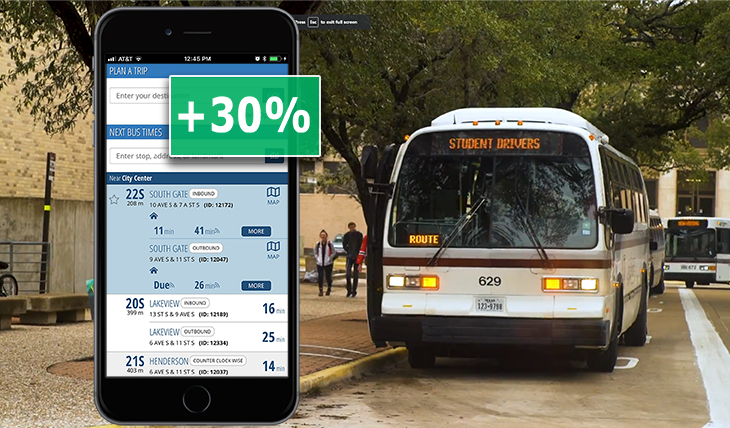Where’s My Bus? Universities use Machine Learning to Predict Bus Departures

So who likes waiting?… No one? Really… no one? Of course not. Who does? It’s certainly no secret that riders have better things to do with their time than wait at a bus stop, especially in extreme weather conditions. And university students really don't have time to wait for the bus. No offense but cutting it close (to get to class and other appointments), could be a subject all on its own, for many tardy scholars.
Universities can be heroes – time after time
Knowing and providing the exact time a bus will depart from any given stop is probably the most important information a university transit operator can provide its riders. Getting to where they need to go – on time, and with predictability, also makes the whole transit experience that much better. And given that it's not as easy as you may think to predict this timing, we’re providing our university clients with some serious technology to become “on-time-performance” heroes, time after time.
Machine learning
Historically, most prediction algorithms were based on simple linear interpolation algorithms, that assumed a bus travelled at the same speed between stops. And although newer algorithms took road speeds and time of day into account, they still weren't completely accurate in predicting bus departure times.
Advances in computer technology and widespread availability of data have now led to the invention of more accurate algorithms, powered by machine learning. Basically, machine learning is the practice of using algorithms to deconstruct data, learn from it, and then make a determination or prediction about something in the world.
Accuracy accelerated
The numbers speak for themselves. By adopting machine learning techniques and technology, transit operators have experienced accuracy gains of 30% on average. That’s a significant reduction in the number of wait time minutes. This also means that vehicles will arrive when they are supposed to, resulting in fewer missed buses and complaints.
Fixed Route and MyRide for agencies and riders
With a suite of solutions and passenger-facing apps, universities are adopting TripSpark’s Campus software to plan the most efficient schedules and give their riders real-time information.
Streets AVL lets dispatchers track their vehicles' locations, schedule adherence, and capacity in real-time. A vehicle's location can be set to update every 2 second for pin point accuracy.This makes it very easy for call takers to confidently answer the once-painful rider query, “where’s my bus?”. Or, riders can find the answer themselves using the MyRide passenger information app.
Prediction algorithms and travel times
Not only can new prediction algorithms track where buses are and when they'll depart, they can also:
- Track historical travel time – if a bus is typically late at the same time on the same day every week, chances are the pattern will continue and the schedule can be adjusted to better reflect real-world conditions.
- Understand recent travel time – if traffic is slow between stops because of a lane reduction, chances are the current trip may be impacted by the same circumstances
- Follow speed changes – even if a driver leaves the terminal late, it doesn’t mean the bus will be late to arrive at every stop along the route
“There's my bus!
The need to ask “where's my bus” is becoming a query of the past. Machine learning is helping transit software developers like TripSpark Transit, to move forward continuously and innovatively with enhanced software solutions to keep university transit operators and riders on-time and satisfied.

